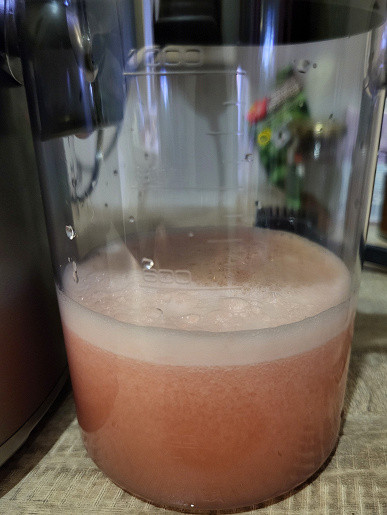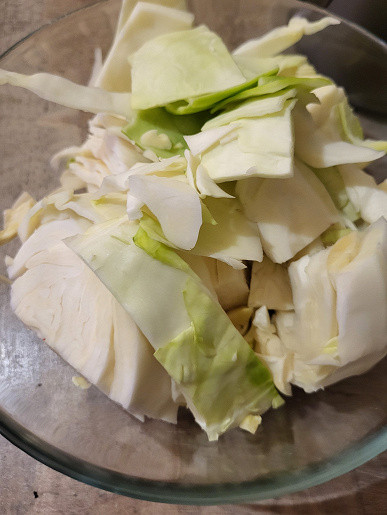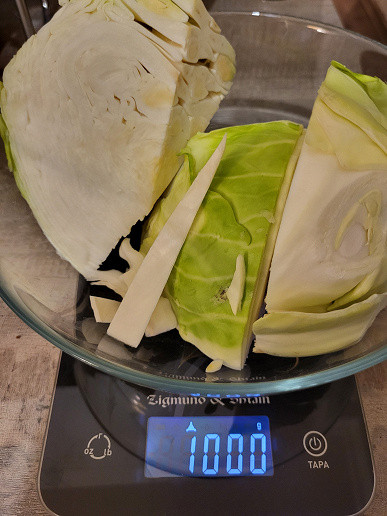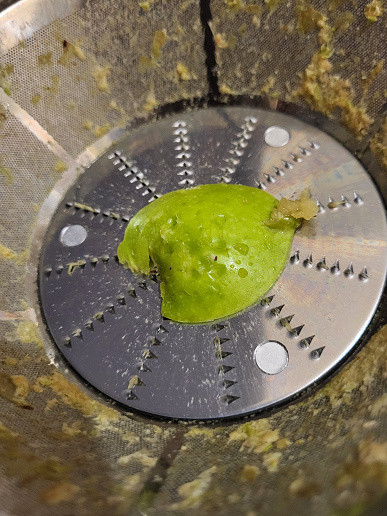How to improve health and digestion? While testing the Redmond J1402 juicer, we learned a lot about various freshly squeezed juices. Rich in beta-carotene and antioxidants, carrot juice promotes health. Cabbage juice helps with gastritis, and apple juice, containing vitamin C, strengthens the immune system. Natural freshly squeezed juices generally contain dietary fiber, which improves intestinal motility, relieves constipation and facilitates digestion.
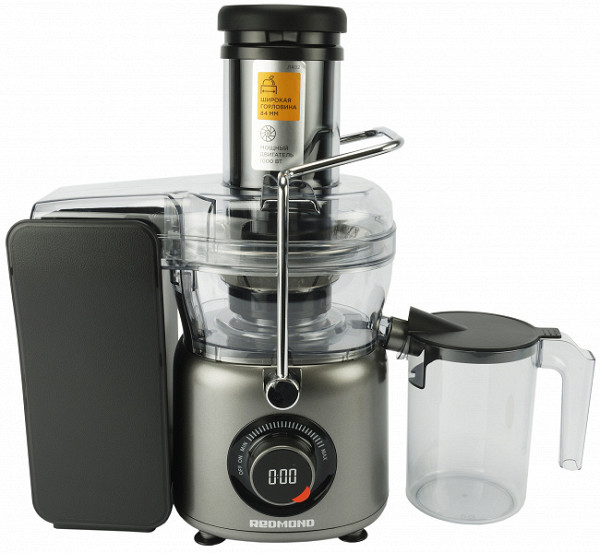
Characteristics
| Manufacturer | Redmond |
|---|---|
| Model | J1402 |
| Type | centrifugal |
| Country of Origin | China |
| Guarantee | 1 year |
| Life time * | 3 years |
| Maximum power | 1040 W |
| Nominal power | 1000 W |
| Body color | grey |
| Body material | plastic |
| Separator knives | stainless steel |
| Control | electronic |
| Speed of work | 16000 rpm |
| Number of speeds | smooth speed control |
| Pulse mode | There is |
| Protection | from improper assembly, overheating, accidental switching on |
| Noise level | 82 dB |
| Additional accessories | cleaning brush |
| Neck size | 84×115 mm |
| Juice container capacity | 1000 ml |
| Volume of the cake container | 2000 ml |
| Design Features | round neck, rubber feet |
| Weight | 3.9 kg |
| Dimensions (W×H×D) | 440×422×200 mm |
| Length of network cable | 1m |
* Contrary to popular belief, this is not a period after which the device will necessarily break down. However, after this period, the manufacturer ceases to bear any responsibility for its functionality and has the right to refuse to repair it, even for a fee.
Equipment
The Redmond J1402 juicer arrived for testing in a cardboard box decorated in the Redmond corporate style with photographs on a black background. The front features a picture of a juicer with a full jug of juice, and the sides feature photos of an apple and carrot with juice pouring out. Also on the sides of the box the main characteristics and features of the device are briefly indicated.
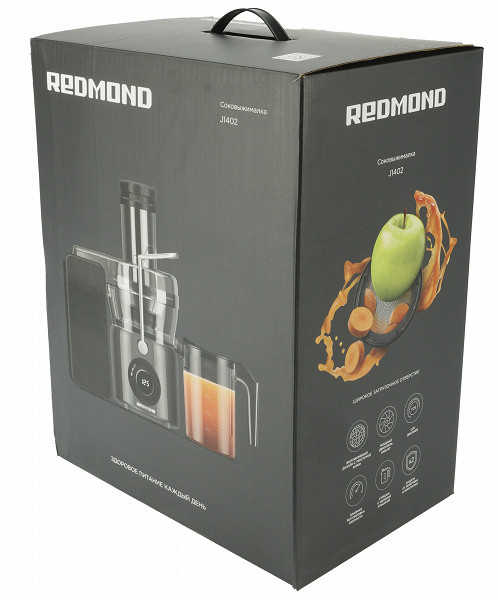
Opening the box, we found:
- juicer
- pusher
- juice glass with lid
- removable spout
- pulp container
- cleaning brush
- manual
- service book
- recipe book
At first sight
The juicer is a fairly large device — its dimensions are 40 cm wide and 44 cm high. It is important to take into account that for the pusher to work, free vertical space is necessary. A container for pulp is attached to the cylindrical body on the left, and a jug for juice on the right. The pulp container and the housing have a common lid, which is fixed using a clamping bracket. The loading tray is located at the top center of the case.
The motor block of the juicer is massive and stable. On the front panel in the center there is a gear shift knob with an LCD display displaying the operating time of the device, and on top is the drive shaft coupling.

Thanks to four rubberized suction feet, the device stands securely on the table. At the bottom there are also ventilation holes and a nameplate with information about the device.
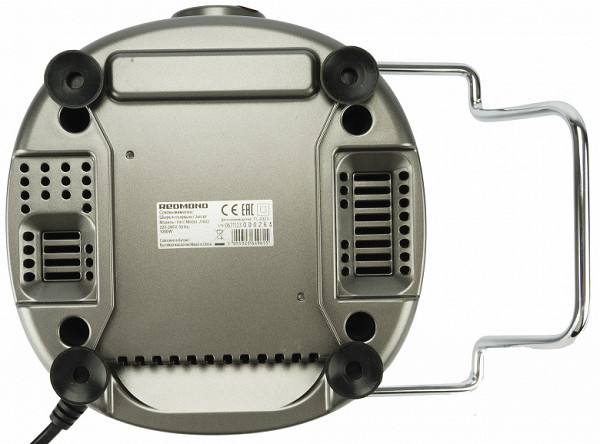
A working chamber is installed on the motor block; a separator with a mesh filter is included inside the working chamber.
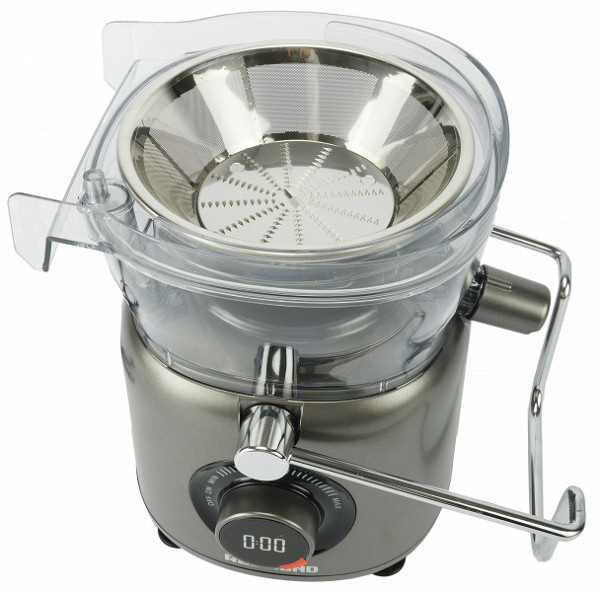
The working chamber is made of transparent plastic, thanks to which we can see the process of making juice with our own eyes.
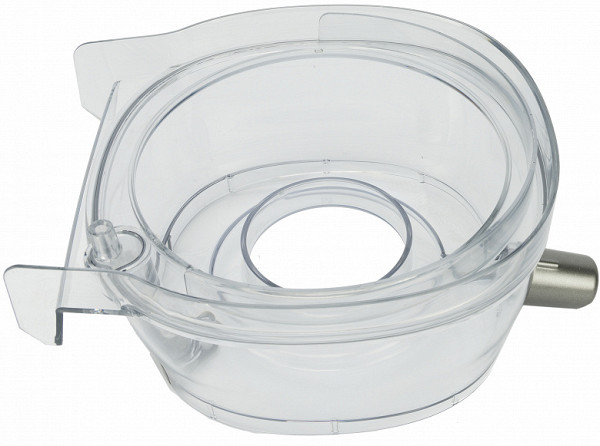
The separator with a mesh filter is made of stainless steel, and, as we said above, is inserted into the center of the working chamber.
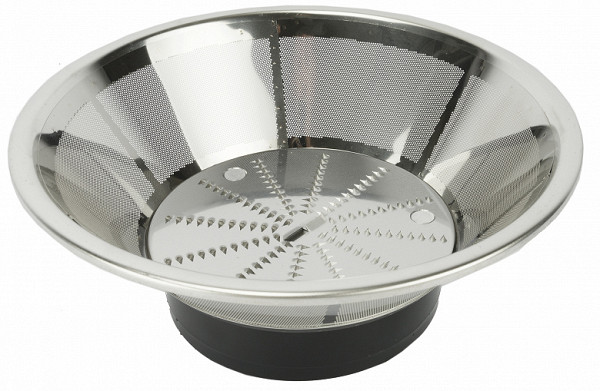
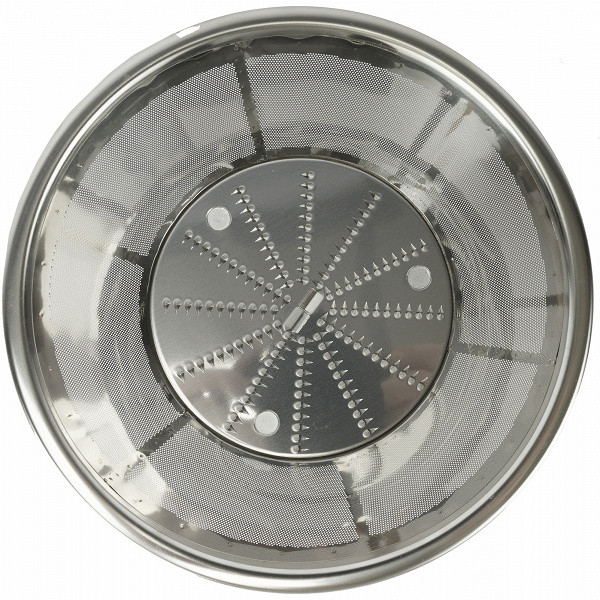
The top of the structure is completed by a lid with a food supply chamber made of transparent plastic. To secure the structure, a lid clamp is used, which also serves as a handle and is made of stainless steel. To close the juicer, the latch must be lifted up at a right angle, aligning it with the groove on the lid until it clicks.
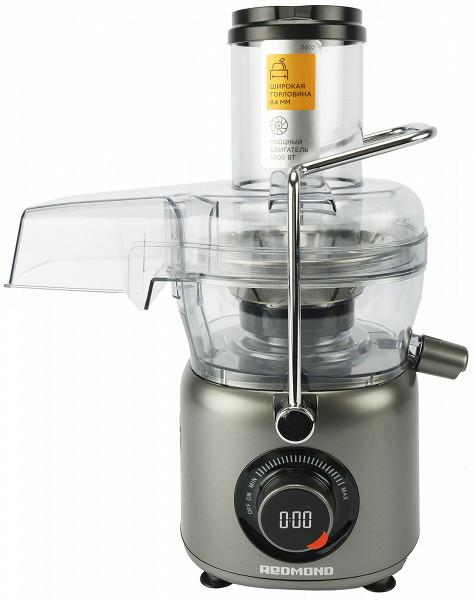
The 1 liter juice container is made of transparent plastic and equipped with a lid and handle. It also has a scale with marks in ml. The cover is removed.
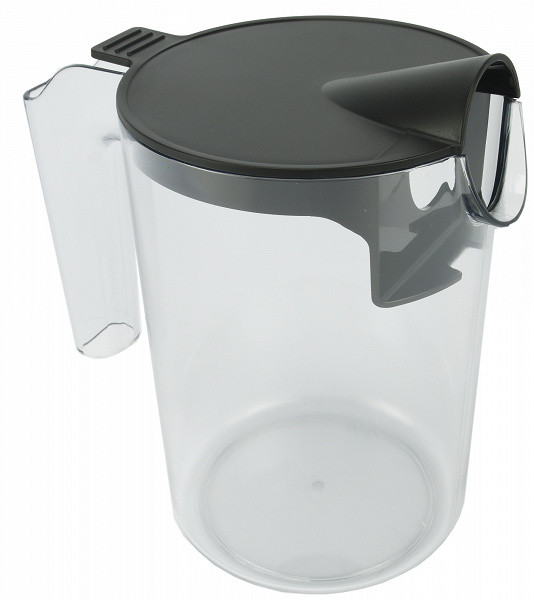
The pulp container is made of black opaque plastic “with the texture of natural leather,” as the manufacturer notes.
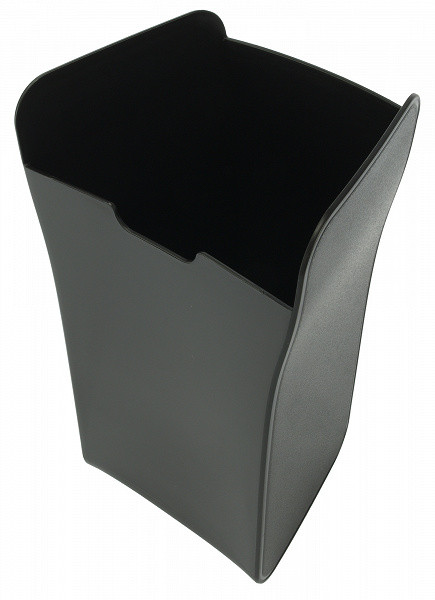
The pusher is also made of black plastic and has grooves (at the bottom) that help you insert it in the right direction and close the neck securely.
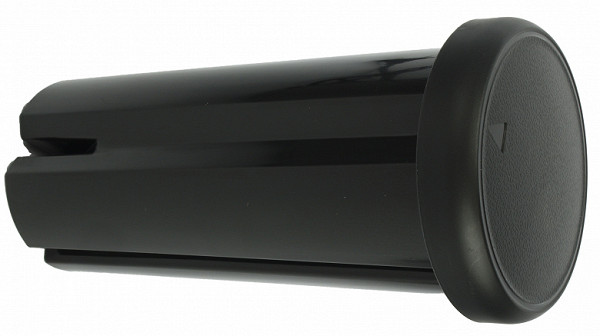
The device also includes a brush for cleaning the separator, also made of black plastic. It is worth noting that the brush is very comfortable to hold in your hand.

Instructions
The instruction manual is presented in the form of a 22-page brochure in Russian and Kazakh. The text contains a description of the structure of the juicer, the principles of its operation, tips for safe operation and recommendations for caring for the device.
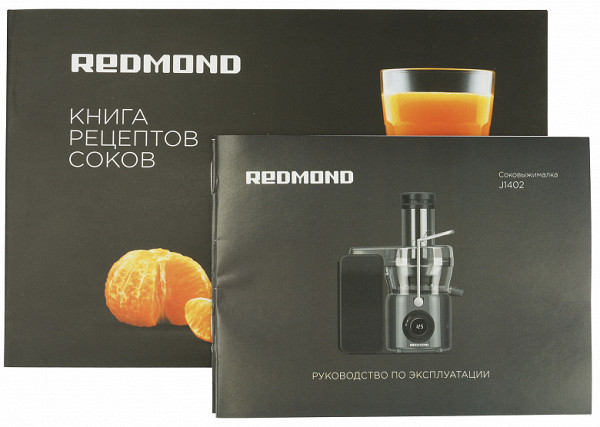
The instruction manual is presented in the form of a 22-page brochure in Russian and Kazakh. The text contains a description of the structure of the juicer, the principles of its operation, tips for safe operation and recommendations for caring for the device.
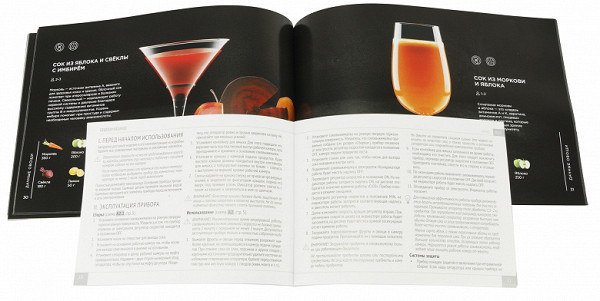
Management
Operating the juicer is very simple. You need to turn the speed control from minimum to maximum and select the desired speed. The LCD display shows the operating time of the device, since juice cannot be squeezed out for more than 1 minute at maximum speed.

The juicer is equipped with protection against incorrect assembly, which will not allow the engine to start if some structural elements are installed incorrectly.
Exploitation
Before starting testing, we washed all the removable parts of the device and wiped the body first with a damp and then a dry cloth.
Operation did not cause us any difficulties. The juicer worked stably throughout the entire period of use and successfully passed all tests. The device is also quickly and easily assembled and disassembled.
While squeezing juice, the LCD display shows the operating time of the device, which helps to avoid overloads, since the juicer cannot be operated at maximum speed for more than 1 minute.
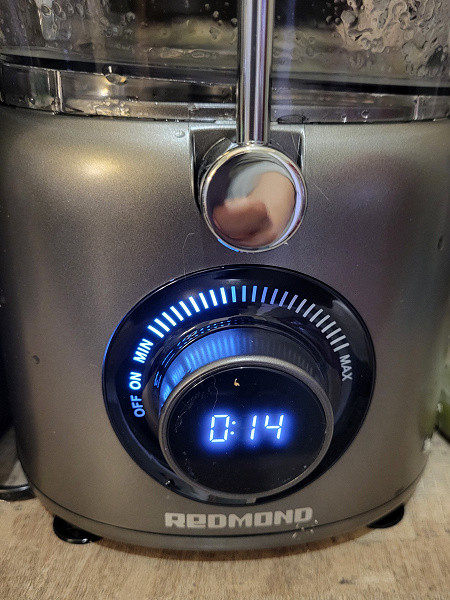
It is worth noting that the device did not have to work for more than a minute: the products are processed quite quickly. At large volumes, we stopped to load a new batch, so the operating time in our tests is cumulative.
The diameter of the neck of the device is 84 mm, which allows you to process whole apples, tomatoes and oranges. However, the use of a pusher is necessary, since without it the products will not enter the separator at the required speed. In addition, if you do not close the hole with the pusher, pieces of food may fly apart.
During the process of squeezing juice, juice may sometimes drip from the spout. To avoid this, you need to ensure contact between the juice jug and the spout. Once the juice has been prepared and the jug has been removed, we recommend placing a container under the spout, as the juice may continue to drip.
The manufacturer claims that the juicer extracts juice from soft and hard fruits equally well. We tested it on hard products such as carrots, apples and cabbage, and the cake was indeed almost dry, not suitable for reprocessing. However, for soft products such as grapefruit or grapes, the pulp remained quite moist and contained some juice.
When preparing juice from cabbage, we encountered a problem: pieces of cabbage leaves fell into the gap between the pusher and the walls of the neck, blocking the pusher. We had to make a significant effort to get him out.
Care
The most important thing is not to leave the juicer unattended after use and not to allow food residue to stagnate. All contaminated removable parts should be thoroughly washed immediately after use with a soft sponge and neutral detergent. The device comes with a convenient cleaning brush that effectively removes leftover fruits and vegetables from the separator.
The housing can be cleaned by wiping it first with a soft, damp cloth and then with a dry cloth.
Our measurements
The maximum power consumption of the Redmond J1402 reached 605 W when squeezing juice from apples and did not exceed this value.
The noise coming from the operating juicer is quite high, but considering that it runs for no more than a minute, this is not a problem.
Practice tests
We tested the juicer according to the specifications, which included several mandatory steps:
- Granny Smith apples
- Pink grapefruit
- Carrot
- White cabbage
General observations have shown that the juicer successfully copes with squeezing juice: when processing hard products, the pulp turns out to be dry, and when using soft products, it is quite moist with some juice content.
Mandatory Test #1 (Grenny Smith apples)
We took 1 kg of Granny Smith apples — a total of 5 large apples.
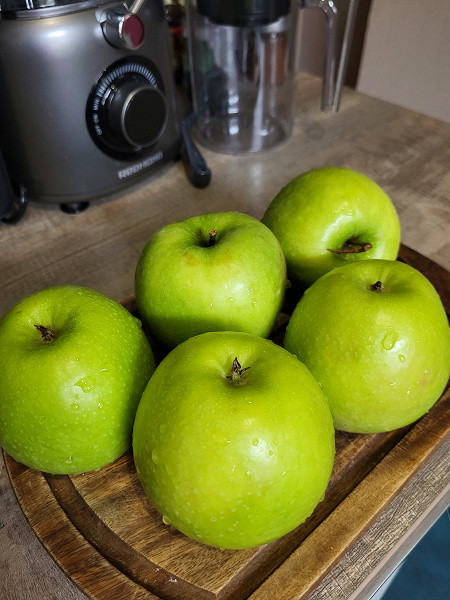
We cut them into not very large pieces, removing the core.
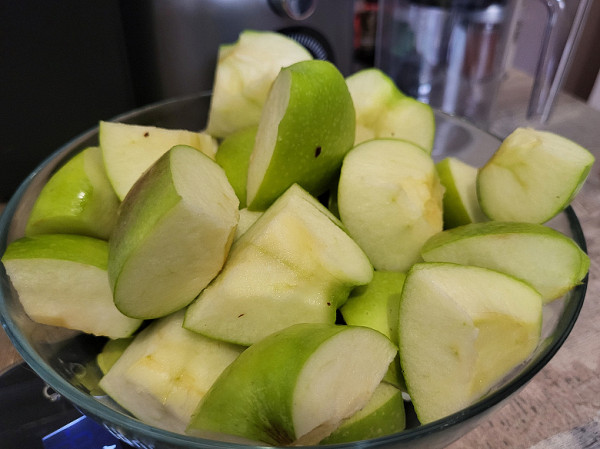
We processed all the apples in three passes, the total time was 2 minutes 25 seconds. At the end we got 620 ml of juice.
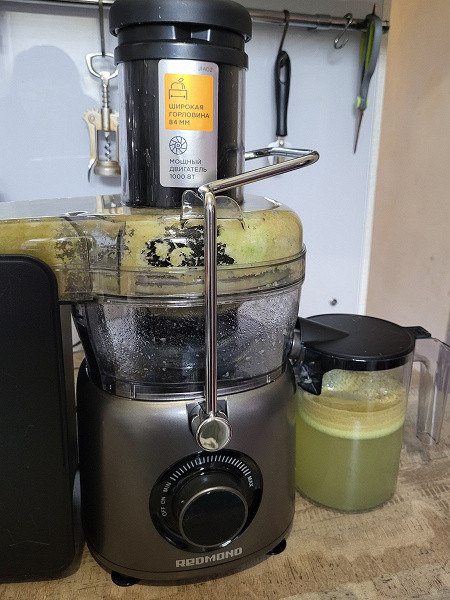
And 270 g of cake, quite dry, but in which large fragments of apples are visible.
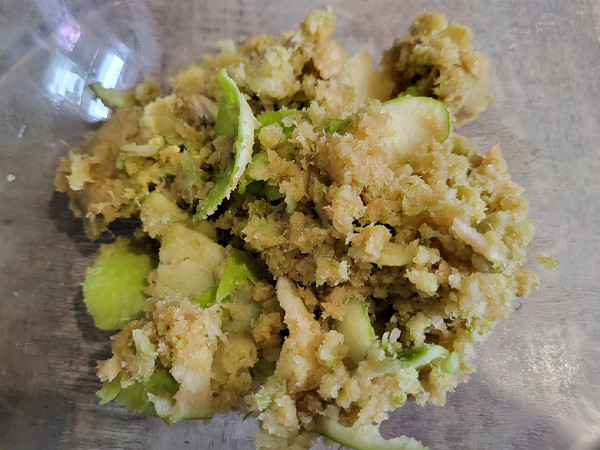
There was a lot of foam, the juice itself had a small amount of pulp and was dense.
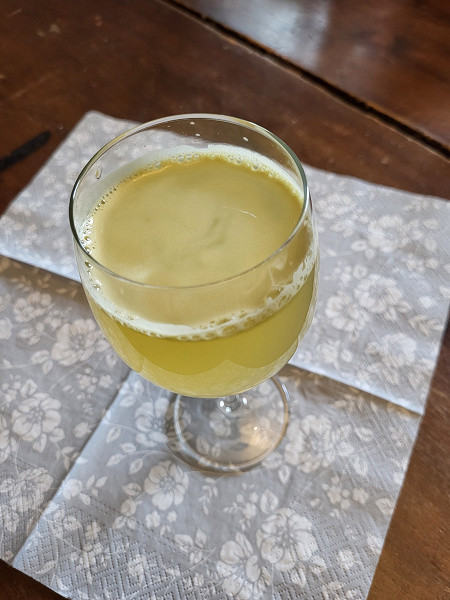
And then we added dried fruits to the squeezed juice and made a compote. It turned out amazing, although perhaps the compote should have been strained before cooking: flakes of boiled foam were visible in the glass.
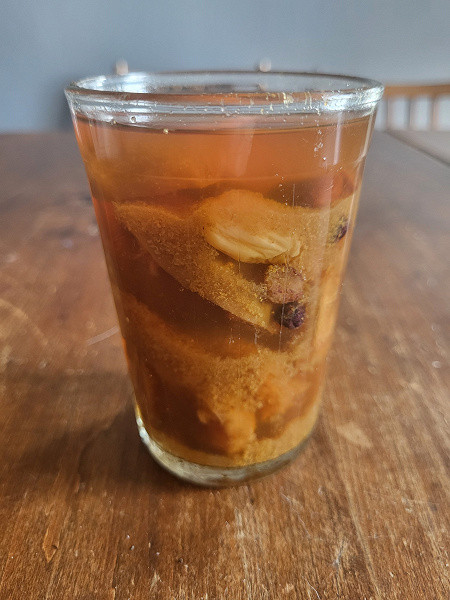
Result: 2 minutes 25 seconds, 620 ml juice
Mandatory test No. 2 (pink grapefruit)
We took grapefruits, peeled and peeled them if possible, obtaining 1 kg of peeled grapefruits, which were then sent to the juicer.
The power of the juicer during the test was 266 W.
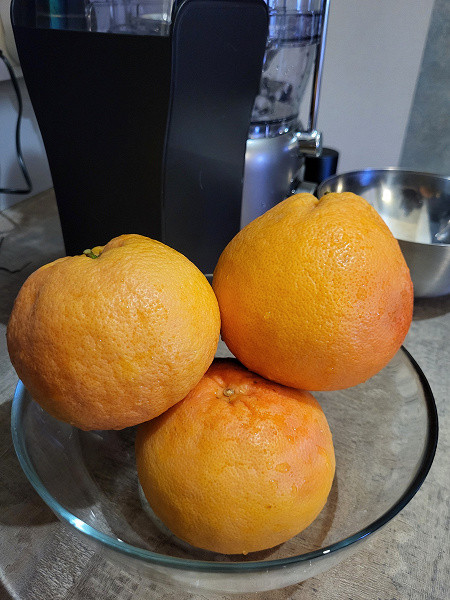
In 20 seconds of operation of the device, we received 500 ml of juice and quite liquid pulp:
The juice turned out great.
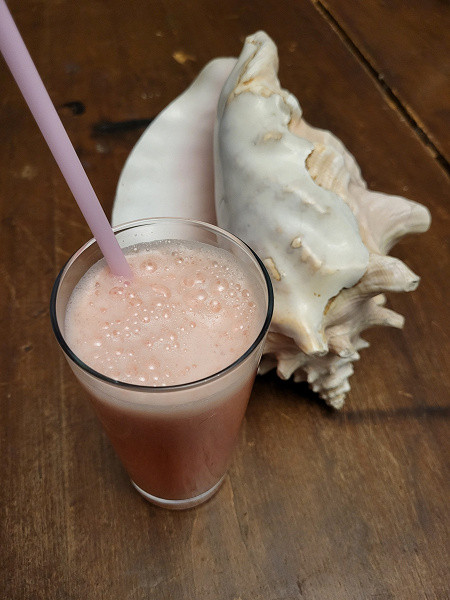
Result: 20 seconds, 500 ml juice
Mandatory test No. 3 (carrots)
Weighing a kilogram of carrots turned out to be easier than in the case of apples or grapefruits. We peeled the carrots and cut them into fairly large pieces.
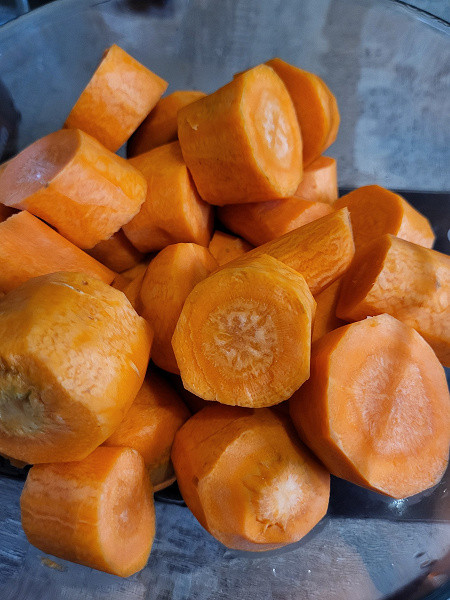
In carrots, unlike more moist products, the cake turned out to be dry and without large fragments:
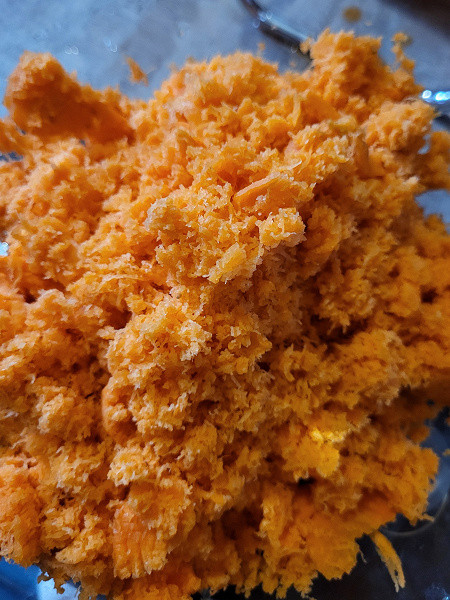
At the end we got 400 ml of juice.

Result: 1 minute 25 seconds, 400 ml of juice
Mandatory test No. 4 (cabbage)
We took and cut 1 kg of white cabbage.
We sent it to the juicer and in 2 and a half minutes we got 500 g of juice...
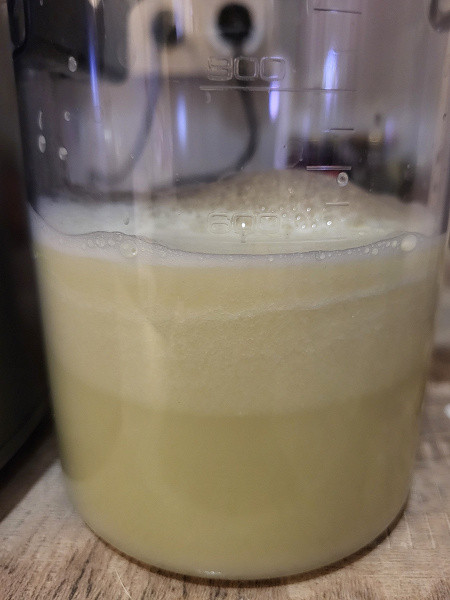
The result of the test was 380 g of cake with large fragments of cabbage leaves. As mentioned in the Operation section, cabbage leaves can get stuck between the pusher and the neck, making removing the pusher quite difficult. In general, it is worth noting that working with a pusher requires significant force.

The juice turned out to be quite dense. As we found out, it is very good for gastritis. In haute cuisine, jelly is also made from cabbage juice, but we still did not dare to cook this dish.
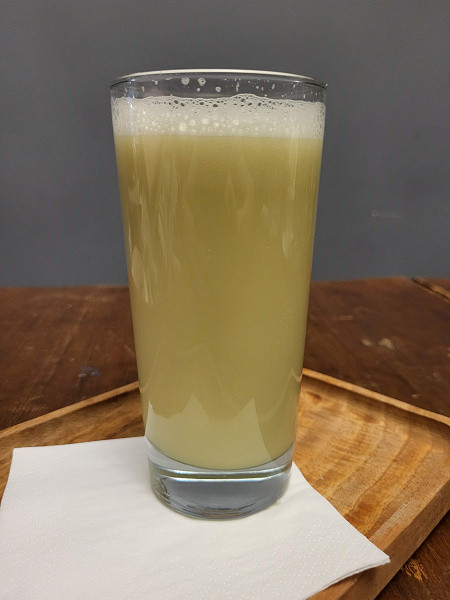
Result: 2 minutes 30 seconds, 500 g of juice.
Summing up the testing results
Based on the results of the mandatory tests, you can calculate the average speed and efficiency for the Redmond J1402 centrifugal juicer. The operating time was 1 minute 40 seconds, and the efficiency reached 505 g of juice.
It is important to remember that the efficiency of juicing can depend on various factors, including the quality of the raw materials, in addition to the quality of the juicer itself.
Whole Granny Smith apples
According to the description of the Redmond J1402, the wide neck of the juicer allows you to load whole fruits without the need to cut them into pieces. To test this claim, we used Granny Smith apples, which were, however, slightly smaller in size than those used in the mandatory test. In total we took 600 grams of apples.
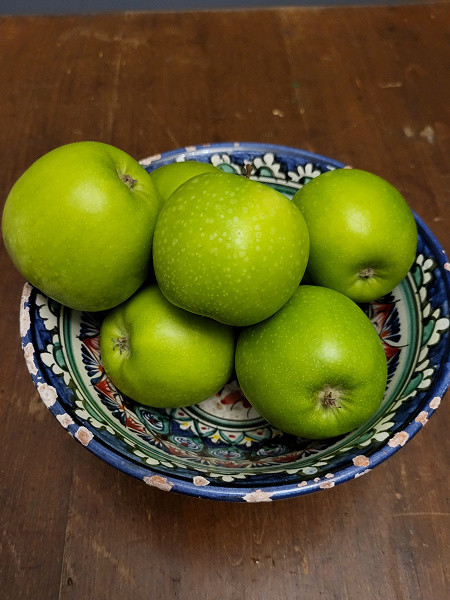
The apples fit into the neck without any problems, but during the process we found out that for best results it is better to load them one at a time. Even in this case, quite a significant amount of force is required when using the pusher.
In the photographs presented you can see the cake remaining after apple processing, with large fragments, as well as a separator and a piece of apple that remained on it after the process. The apple also shows marks from the pusher, which was unable to push the apple all the way through.
On average, when loading apples one at a time into the neck of the juicer and using a pusher, it took 7-8 seconds to process one apple.
As a result, we received 300 milliliters of juice.

We reduce the rating for too large fragments in the cake.
Result: good
Grape
We took 400 g of grapes and put them into the juicer.
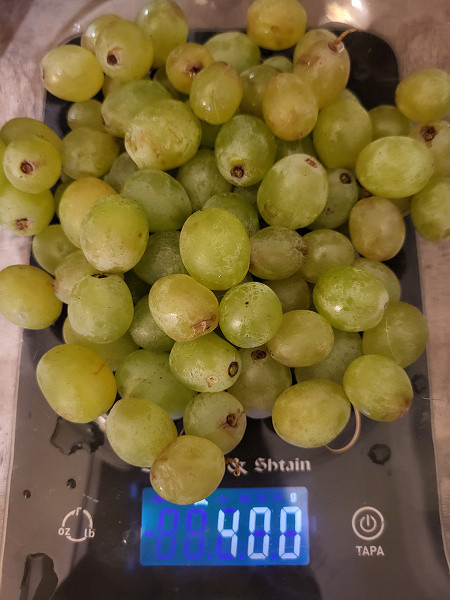
Everything happened at lightning speed, so we didn’t have time to time it, but we got 100 g of juice and a certain amount of very wet pulp, also with fragments of grapes.
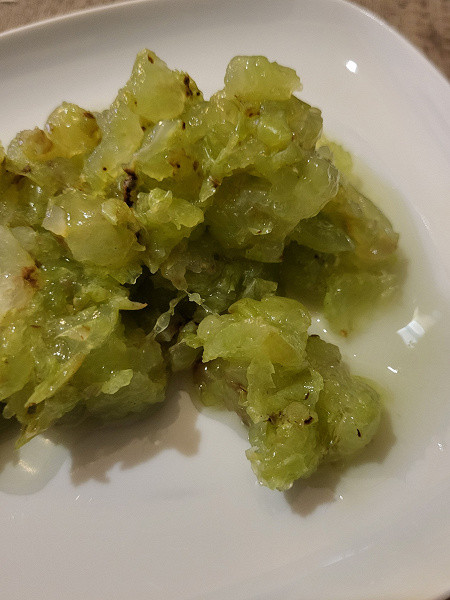
In general, the juice turned out well, but still the efficiency of the juicer with soft products raises some questions.
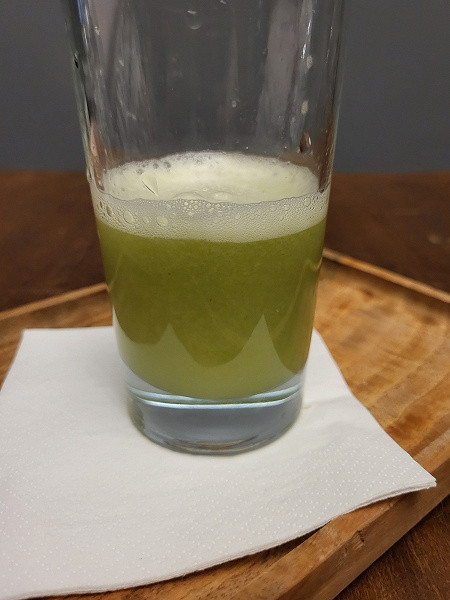
We then combined the apple juice from the previous dough with the grape juice, added cinnamon, cloves, cardamom and a little sugar. The mixture was poured into a saucepan, brought to a boil and simmered for a couple of minutes. The result is an excellent hot drink that can be added with rum and turned into grog if desired.
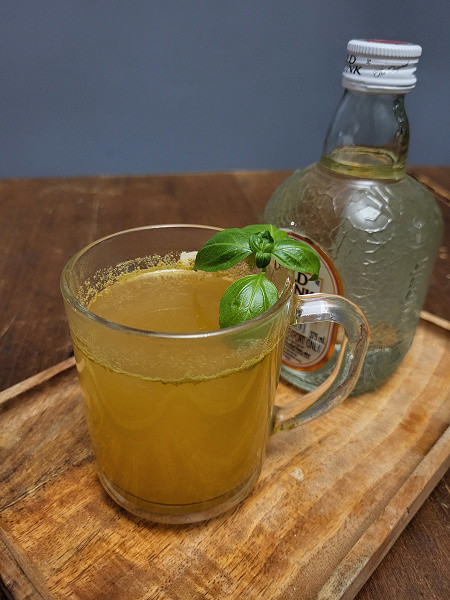
We are lowering the rating because we could have gotten more juice by squeezing our device more carefully.
Result: good
conclusions
Overall, our testing results are positive, although analysis of the summary table showed that our model is not the fastest or most efficient in its category. However, if you just need a quick glass of fresh juice for breakfast, then this juicer will do just fine. Thanks to the wide diameter of the loading opening, you can cut fruits and vegetables into large pieces or load them whole, which significantly saves juice preparation time.
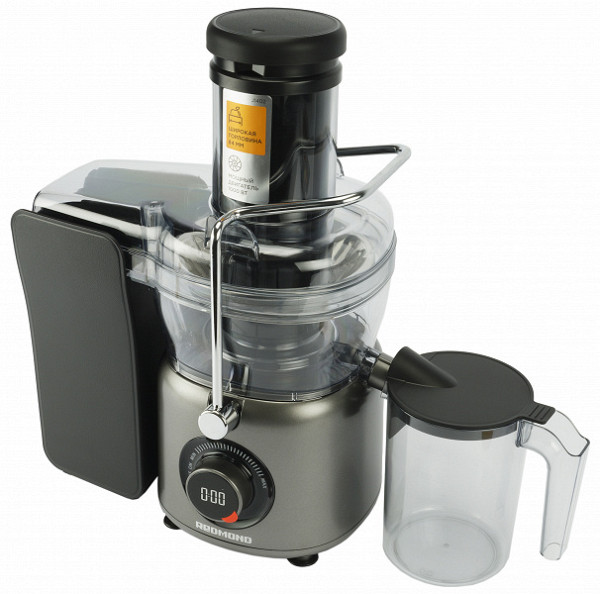
In general, we did not have any particular complaints about the operation of the device. This is a convenient and quite comfortable juicer for home use.
Pros:
- ease of use and maintenance
- quite good results
- wide loading opening
Minuses:
- when making juice from soft products, wet pulp

